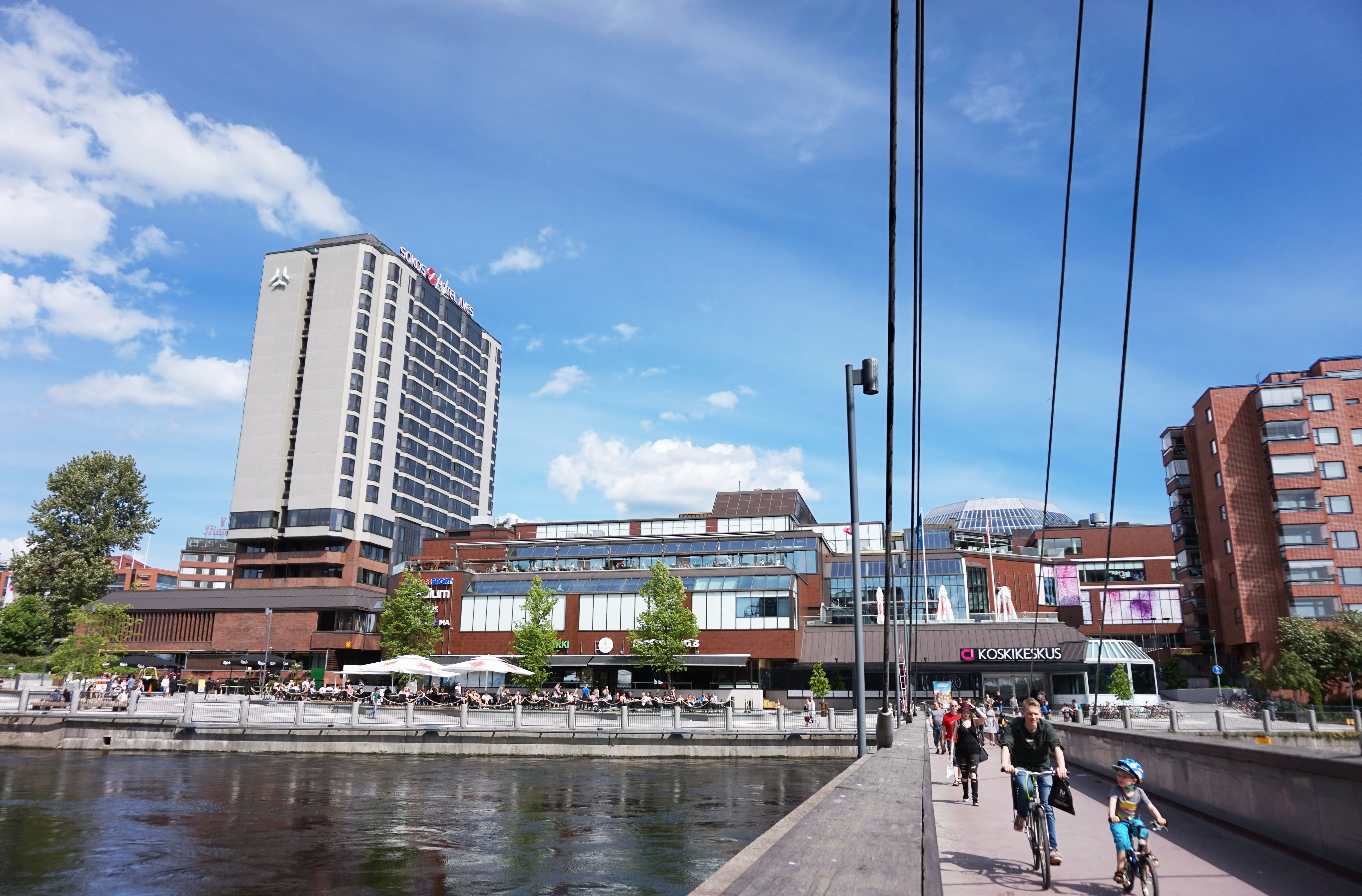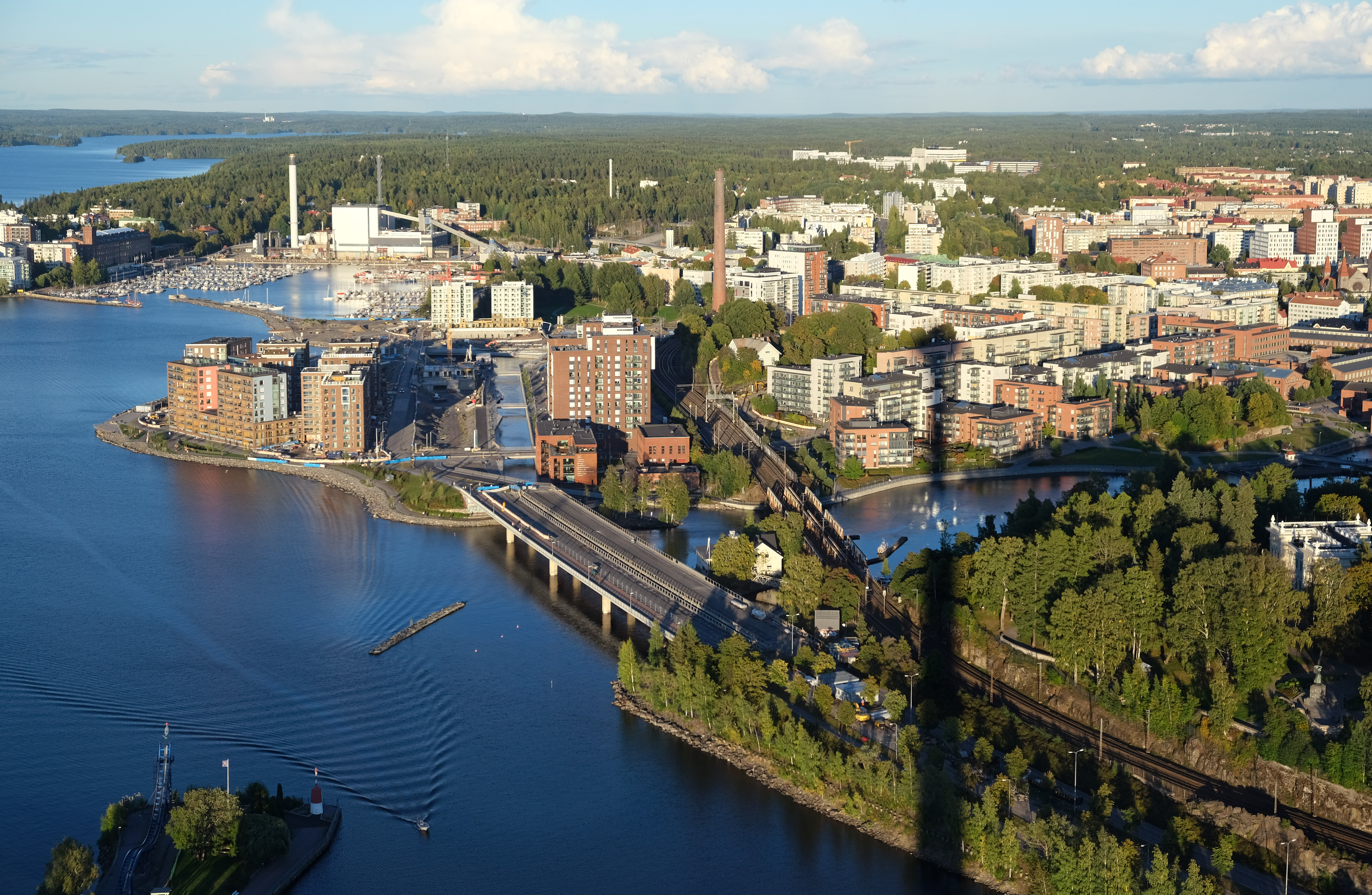|
Jussinkylä
Jussinkylä (also known as Juhannuskylä) is a neighbourhood in the city center of Tampere, Finland. It is located east of Tammerkoski and borders Satakunnankatu in the south. To the east and northeast, the district is bounded by a railway and to the northwest by Lapintie. The Erkkilä Bridge (''Erkkilän silta'') connects Jussinkylä to Tammela. The most significant landmarks in the area are Tampere Cathedral and Tampere Central Fire Station. Neighboring neighborhoods are Finlayson, Tampella and Kyttälä, from which the latter runs a route along the Tuomiokirkonkatu street. The background to the name of the district is unknown, but it has been in use since at least the 1870s. It may refer to a person named Johannes, or even to the celebration of Midsummer Midsummer is a celebration of the season of summer usually held at a date around the summer solstice. It has pagan pre-Christian roots in Europe. The undivided Christian Church designated June 24 as the feast day of ... [...More Info...] [...Related Items...] OR: [Wikipedia] [Google] [Baidu] |
Tampere
Tampere ( , , ; sv, Tammerfors, ) is a city in the Pirkanmaa region, located in the western part of Finland. Tampere is the most populous inland city in the Nordic countries. It has a population of 244,029; the urban area has a population of 341,696; and the metropolitan area, also known as the Tampere sub-region, has a population of 393,941 in an area of . Tampere is the second-largest urban area and third most-populous individual municipality in Finland, after the cities of Helsinki and Espoo, and the most populous Finnish city outside the Greater Helsinki area. Today, Tampere is one of the major urban, economic, and cultural hubs in the whole inland region. Tampere and its environs belong to the historical province of Satakunta. The area belonged to the Häme Province from 1831 to 1997, and over time it has often been considered to belong to Tavastia as a province. For example, in '' Uusi tietosanakirja'' published in the 1960s, the Tampere sub-region is presented as p ... [...More Info...] [...Related Items...] OR: [Wikipedia] [Google] [Baidu] |
Tampere Cathedral
Tampere Cathedral ( fi, Tampereen tuomiokirkko, sv, Tammerfors domkyrka; originally known as St. John's Church) is a Lutheran church in Tampere, Finland, and the seat of the Diocese of Tampere. The building was designed in the National Romantic style by Lars Sonck, and built between 1902 and 1907. The cathedral is famous for its frescoes, painted by the symbolist Hugo Simberg between 1905 and 1906. The paintings aroused considerable adverse criticism in their time, featuring versions of Simberg's ''The Wounded Angel'' and ''The Garden of Death''. Of particular controversy was Simberg's painting of a winged serpent on a red background in the highest point of the ceiling, which some contemporaries interpreted as a symbol of sin and corruption. The altar-piece, representing the future resurrection of people of all races, was painted by Magnus Enckell Knut Magnus Enckell (9 November 1870 in Hamina – 27 November 1925 in Stockholm) was a Finnish symbolist painter. At first he pa ... [...More Info...] [...Related Items...] OR: [Wikipedia] [Google] [Baidu] |
Tampere Central Fire Station
The Tampere Central Fire Station ( fi, Tampereen keskuspaloasema) is a fire station located at Satakunnankatu 16 in the Jussinkylä, Tampere, Finland, on the eastern shore of Tammerkoski. The Art Nouveau-style fire station building, completed in 1908, was designed by architect Wivi Lönn. History A permanent fire brigade was established in Tampere on 5 July 1898, and a voluntary fire brigade had been established in the city as early as 1873. The permanent fire brigade initially operated in temporary premises in the merchant Axel Siren's house at Puutarhakatu 6. A estate of land was built for the building along Satakunnankatu in 1903, and in 1905 a fire station design competition was held, which was won in February 1906 by architect Wivi Lönn. The Malmö's fire station in Sweden must have been used as an example in the design of the fire station. Design and construction The station was originally designed for horse-drawn equipment and the horse stables and equipment hall were l ... [...More Info...] [...Related Items...] OR: [Wikipedia] [Google] [Baidu] |
Kyttälä
Kyttälä is a district in Tampere, Finland. It was born in the late 1870s as a working-class neighborhood to the eastern outskirts of the town. As Tampere soon expanded, Kyttälä is now a part of the city center between the Tammerkoski river and the railway. Population of Kyttälä is 3,348 (31 December 2014). Aleksanterinkatu is one of Kyttälä's main streets. The direct connection to the Liisankallio district and from there to Teiskontie and Sammonkatu streets runs along Itsenäisyydenkatu and connection to the Jussinkylä district runs along Tuomiokirkonkatu. Notable sights * Tampere Orthodox Church *Hotel Tammer *Tampere railway station *Hotel Ilves *Koskikeskus (shopping centre) * Posteljooninpuisto * Sori Square See also * Ratina (district) * Tulli (district) Tulli () is a district in the center of Tampere, Finland.Maija Louhivaara: ''Tampereen kadunnimet'', p. 86. Tampereen museoiden julkaisuja 51, 1999, Tampere. (in Finnish) It takes its name from the Customs ... [...More Info...] [...Related Items...] OR: [Wikipedia] [Google] [Baidu] |
Tuomiokirkonkatu
Tuomiokirkonkatu (literally "Cathedral Street") is a north–south street in the center of Tampere, Finland, which runs through the districts of Jussinkylä and Kyttälä. The street is about a kilometer long. In the north it ends at Lapintie, in the south Vuolteenkatu. In Kyttälä, part of Tuomiokirkonkatu has been turned into a pedestrian street. In the future, the pedestrian section will be expanded so that it will eventually extend south from Kyttälänkatu to Suvantokatu and the Sori Square (''Sorin aukio''). The street got its current name in 1936, when the city underwent a major street name reform. Tuomiokirkonkatu refers to the Tampere Cathedral, which is located along the street. The previous name ''Viinikankatu'' was in the town plan in 1886–1936. The old name was abandoned because it was considered misleading; after the town plan changes, the street no longer led to the Viinikka district. Tuomiokirkonkatu has several important sites for cultural historically archite ... [...More Info...] [...Related Items...] OR: [Wikipedia] [Google] [Baidu] |
Satakunnankatu
Satakunnankatu is an east–west, busy street in the center of Tampere, Finland, which is one of the city's main streets. It starts from the vicinity of Tampere Cathedral on the east side of Tammerkoski, where it separates the Jussinkylä and Kyttälä Districts. The street crosses the rapids along the Satakunta Bridge (''Satakunnansilta'') and runs on the west side between Finlayson and the Hämeenpuisto park. From there it continues through the Amuri area to the Pirkankatu street. Satakunnankatu is part of the nationally significant industrial landscape of Tammerkoski, and there are several sites along it that are valuable for architecture, cultural history and the cityscape. The street is bordered by, among other things, the former weaving building Plevna (1877), which belongs to the Finlayson factory area, where the first electric lighting in the Nordic countries and the then Russian Empire was introduced in 1882. Other nationally significant buildings on Satakunnank ... [...More Info...] [...Related Items...] OR: [Wikipedia] [Google] [Baidu] |
Tampella (district)
Tampella (until 2002 known as Naistenlahti) is a neighbourhood in the northern part of the city center of Tampere, Finland. It consists of the old Tampella factory area, the Armonkallio residential area and the Naistenlahti harbor area. The neighboring parts of the internally heterogeneous district located on the shores of Lake Näsijärvi are Lapinniemi, Lappi, Osmonmäki, Tammela, Jussinkylä, Finlayson and Särkänniemi. The Naistenlahti Power Plant operates on the shores of Lake Näsijärvi in Tampella. The Vapriikki Museum Centre is also located in the district. (in Finnish) See also *[...More Info...] [...Related Items...] OR: [Wikipedia] [Google] [Baidu] |
Finland
Finland ( fi, Suomi ; sv, Finland ), officially the Republic of Finland (; ), is a Nordic country in Northern Europe. It shares land borders with Sweden to the northwest, Norway to the north, and Russia to the east, with the Gulf of Bothnia to the west and the Gulf of Finland across Estonia to the south. Finland covers an area of with a population of 5.6 million. Helsinki is the capital and largest city, forming a larger metropolitan area with the neighbouring cities of Espoo, Kauniainen, and Vantaa. The vast majority of the population are ethnic Finns. Finnish, alongside Swedish, are the official languages. Swedish is the native language of 5.2% of the population. Finland's climate varies from humid continental in the south to the boreal in the north. The land cover is primarily a boreal forest biome, with more than 180,000 recorded lakes. Finland was first inhabited around 9000 BC after the Last Glacial Period. The Stone Age introduced several differ ... [...More Info...] [...Related Items...] OR: [Wikipedia] [Google] [Baidu] |
Tammerkoski
Tammerkoski is a channel of rapids in Tampere, Finland. The city of Tampere is located between two lakes, Näsijärvi and Pyhäjärvi. The difference in altitude between these two is and the water flows from Näsijärvi to Pyhäjärvi through the Tammerkoski rapids. The banks of the Tammerkoski are among the oldest industrial areas in Finland. There was a busy marketplace in the 17th century. Tampere was founded on the banks of the rapids, as the rushing water provided a great deal of power for the needs of industry. There are four power stations and three dams located on the Tammerkoski. The highest in altitude is the dam between Finlayson and Tampella. From this dam, the stream is led to the power stations of Finlayson and Tampella on either side of the rapids. In the middle, there is the city's power plant and the lowest one in terms of altitude is the dam at the Tako paperboard mill, which belongs to M-real. The three uppermost power stations are owned by the city, while ... [...More Info...] [...Related Items...] OR: [Wikipedia] [Google] [Baidu] |
Erkkilä Bridge
Erkkilä is a Finnish language surname, derived from the given name Erkki, a form of Eric.''Dictionary of American Family Names''"Erkkilä Family History" Oxford University Press, 2013. Retrieved on 21 January 2016. Notable people with the surname include: *Eeli Erkkilä Eeli Johannes Erkkilä (21 November 1909 - 1 April 1963) was a Finnish smallholder and politician, born in Oulainen. He served as Deputy Minister of Social Affairs from 13 January 1959 to 14 July 1961, Deputy Minister of Transport and Public Works ... (1909–1963), Finnish politician * Eero Erkkilä (born 1941), Finnish conductor * Mika Erkkilä (born 1990), Finnish ice hockey player References Finnish-language surnames {{DEFAULTSORT:Erkkila ... [...More Info...] [...Related Items...] OR: [Wikipedia] [Google] [Baidu] |
Tammela, Tampere
Tammela is a district in Tampere, Finland, located east of the city centre. Tammela was born since the 1870s as a working-class neighbourhood, today it is especially popular among the students of the nearby Tampere University. As of 2014, the population of Tammela was 5,646. Tammela was almost completely destroyed in the 1918 Finnish Civil War Battle of Tampere and also severely damaged in the air raids of World War II World War II or the Second World War, often abbreviated as WWII or WW2, was a world war that lasted from 1939 to 1945. It involved the vast majority of the world's countries—including all of the great powers—forming two opposing .... Some wooden houses from the early 1900s have remained in the so-called Puu-Tammela area in the eastern side of the district. Today Tammela is known of the Tammelantori Market Square and its '' mustamakkara'' kiosks, and the Tammela Football Stadium. References External links Official Homepage of the Tammela ... [...More Info...] [...Related Items...] OR: [Wikipedia] [Google] [Baidu] |
_Tampere.jpg)




